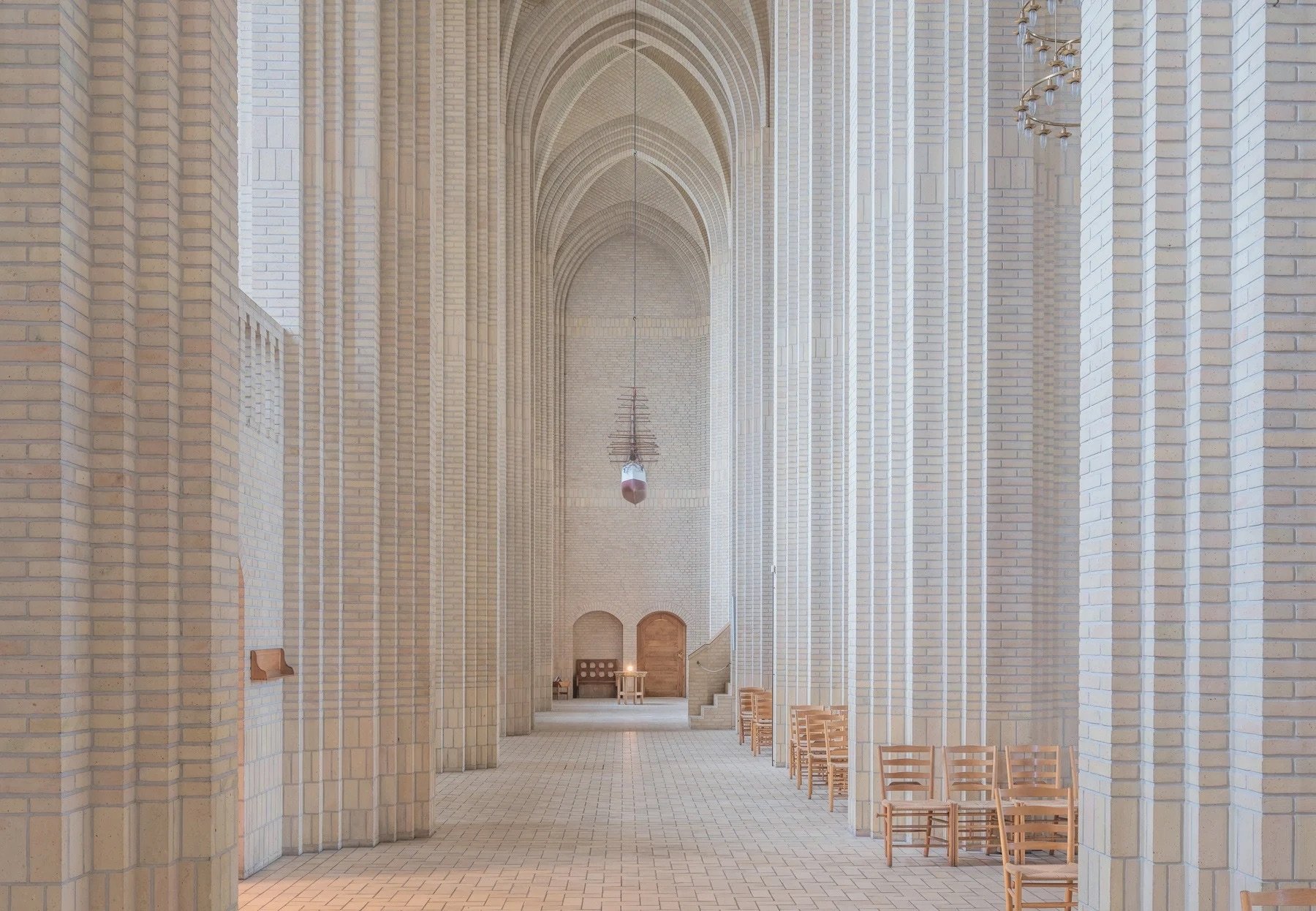
Material Love.
Fired Earth.
I have a borderline obsession — as do most architects — with materials and materiality. I intend to write about some of my favourites and examine what makes them so successful and appealing — if only to me. From the ubiquitous to the new-tech, I will examine a range of materials that I encounter daily, or in some cases, wish I did.
Widely used for 1000's of years?, it graces the facades of some our best loved historic buildings. The raw material is plentiful and the end product re-usable. It is of course - brick. Clay from the earth fired into individual units.
Grundtvigs Church, Copenhagen — constructed entirely of brick.
For me, some of the most successful buildings, however modest, are those that speak of how they were made. The hand of the craftsman visible in the material, finish and quality. This is so rare to encounter in new buildings today as we tend to build quickly and cheaply and then cloak this work with a camouflage material - be that plasterboard or render.
So, why is brick so appealing, so enduring? The idea that each brick is sized to be picked up and placed with one hand, I believe, is the main reason. We respond best, naturally enough, to objects that are human-scaled. Even in massive civil-engineering structures, the eye can pick up the individual bricks as well as read the textured whole. It is this modular simplicity and yet visual depth that appeals so much to us.
Here in Dublin, a Georgian city, we are spoilt with seemingly endless examples of historic brickwork - so much, in fact, that we sometimes barely notice it. It becomes the default background texture. And what a texture! Even in a single colour, brick has pattern and texture due to the source of the clay, the firing process and the mortar pointing. This creates a grid like secondary pattern that can dramatically alter the appearance and perceived colouration. Brick can simultaneously have a solidity and a lightness - a rare quality.
Texture and colour variation.
The enduring appeal of brick has been somewhat undermined by its use as a thin camouflage skin, particularly on modern mass housing. A structural material by design, it deserves so much better and offers so much more when used appropriately.
Alvar Aalto’s experimental house



